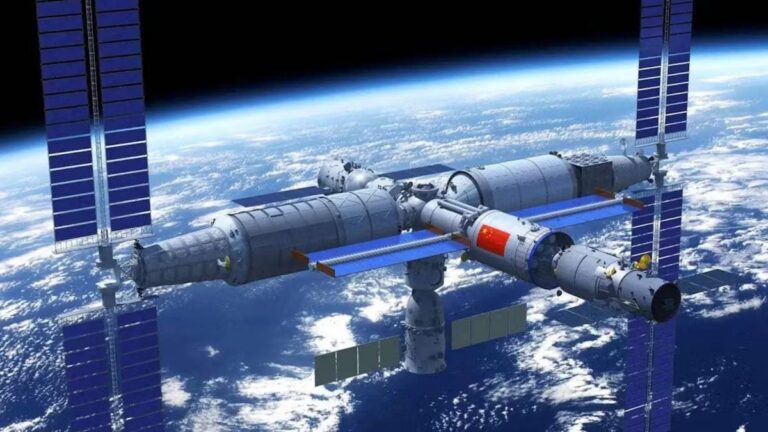Astronauts in the Tiangon Space Station’s deep sea-19 missions converted carbon dioxide and water into oxygen and ethylene using semiconductor catalysts.
read more
Chinese astronaut teams use a process known as “artificial photosynthesis” to claim a large space technology break -through by synthesizing rocket fuel in space.
This result, which is part of the deep-sea-19 missions on the Tiangon Space Station, opens a way to sustainable space exploration by producing important resources such as oxygen and rocket fuel directly from the environment of the universe. It has attracted a lot of attention because of the possibility. According to the report of the South China Morning Post.
New approach to space production in space
The astronaut in the SHENZHOU-19 mission has converted carbon dioxide and water into oxygen and ethylene using semiconductor catalyst. This is commonly used in spacecraft propulsion agents. According to CCTV in the state, the process imitates the natural photosynthesis of plants, but is designed to function in a micro gravity environment that is trapped using physical and chemical methods.
Successful production of oxygen and rocket fuel can be an important step in securing long -term human survival and exploration of the universe, especially for future missions to the moon and Mars.
With this process, astronauts can produce the fuel and oxygen required for long -term missions, relying on resources found in carbon dioxide and other spaces. Future Space Explorers can reduce the dependence on the Earth’s supply by using the In-Situ resource and enable long-term missions.
Sustainable space exploration
This innovation indicates a significant deviation from the previous oxygen production method, which was used in an international space station (ISS), which was used in a solar panel of hydrogen and oxygen with solar cell panels.
It is effective, but electrolytes are energy -intensive, not practical for long -range missions like the moon or Mars. According to experts, the artificial optical synthesis method developed by the Chinese space program is efficiently functioning at room temperature and standard air pressure, reducing the energy required for these processes.
New technology reveals the possibility of resource independence in the universe. In addition to the production of oxygen and rocket fuel, you can adjust this system to create various products such as methane for promotion and sugar synthesis. This versatility is the key to producing necessary resources while astronauts in space, making the tasks on distant planets more executed.
The main steps in China
Successful demonstrations in China’s artificial photosynthesis are positioned as the forefront of sustainable space technology. This technology is not only important for astronauts survival, but also for a wider goal than long -term space exploration and residence.
By being able to generate oxygen and fuel directly from space, China did a big breakthrough for humanity to live in space and work without relying on supplies tied to the earth. This technology is also considered an important step in achieving resources independence in the outside of the earth. This is indispensable for future interconnection colonization.
Chinese space organizations want to further improve the processes and explore other catalytic reactions that can further improve the process by planning to upgrade orbit technology. This breakthrough sets a more sustainable space technology that can play a very important role in human space exploration for the next many years.


